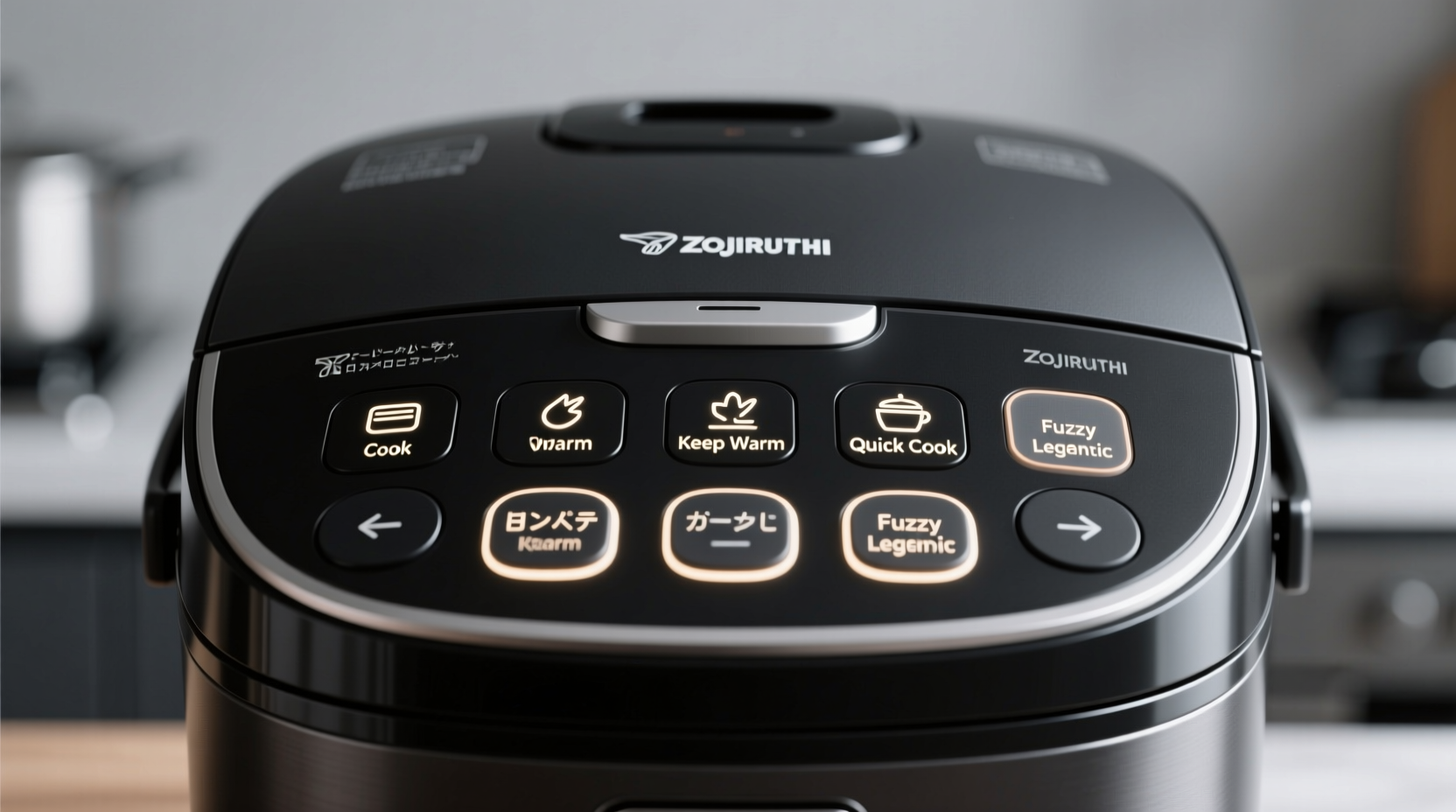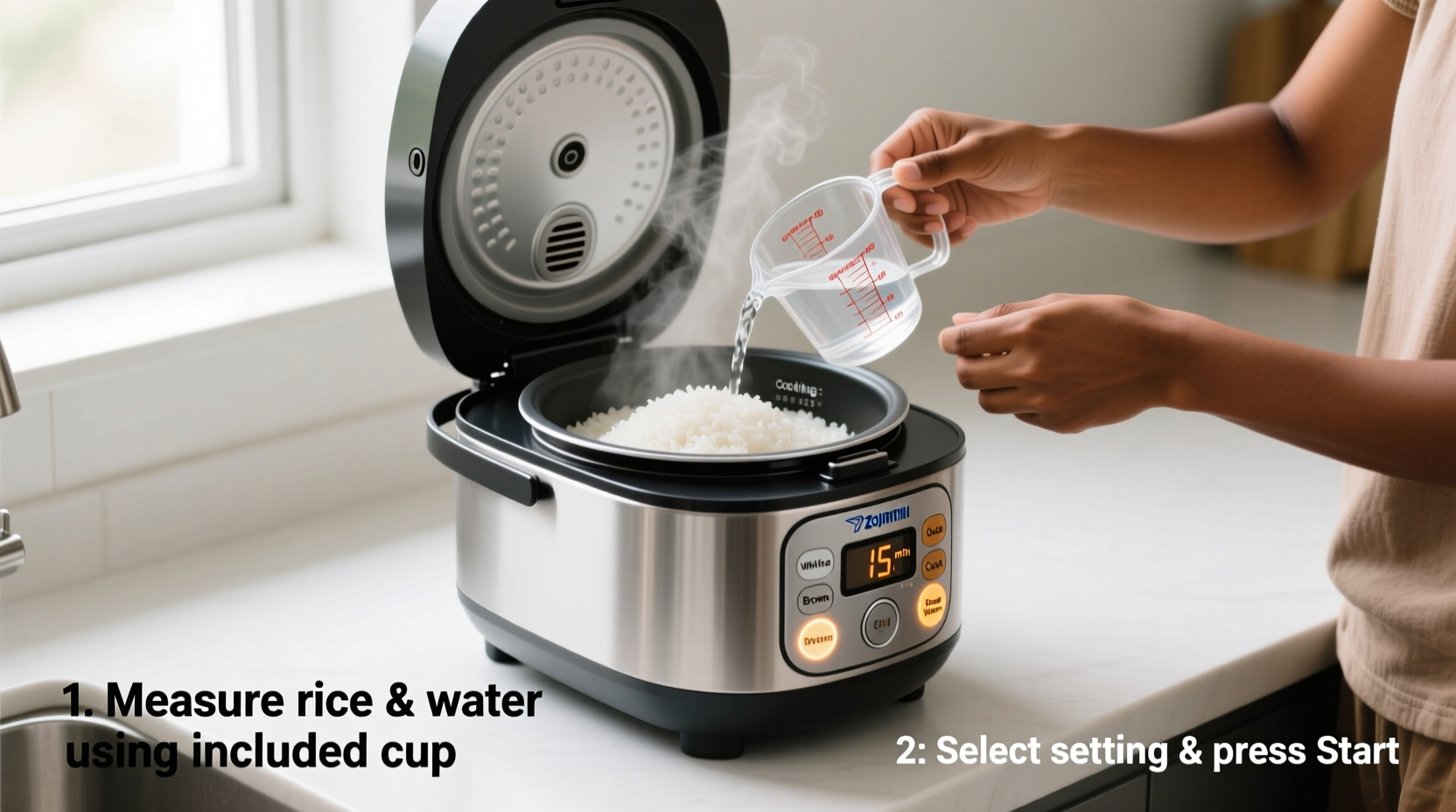Master your Zojirushi rice cooker in 5 simple steps: 1) Measure rice using the included cup, 2) Rinse thoroughly until water runs clear, 3) Add water to the corresponding level line, 4) Select appropriate menu setting, 5) Press start and let the cooker complete its cycle. Your perfect rice will be ready in 40-60 minutes with automatic keep-warm function activating afterward.
Your Complete Guide to Using a Zojirushi Rice Cooker
Discover why Zojirushi consistently ranks as the top rice cooker brand among culinary professionals and home cooks. With Japanese precision engineering and advanced fuzzy logic technology, these appliances transform simple grains into perfectly cooked rice every time. This guide provides practical, step-by-step instructions based on manufacturer specifications and professional chef techniques.
Understanding Your Zojirushi Model
Zojirushi offers several series with varying capabilities. The premium NP and NS-ZCC models feature advanced microcomputer technology, while the basic NS-TSC series provides essential functionality. All models share core features that make them superior to basic rice cookers:
| Feature | Basic Models | Premium Models |
|---|---|---|
| Cooking Technology | Standard heating | Fuzzy logic with temperature sensors |
| Menu Settings | 3-4 options | 6-10 specialized settings |
| Keep-Warm Duration | 12 hours | 24 hours |
| Delay Timer | Not available | Up to 13 hours |
According to consumer reports tracking appliance satisfaction since 2018, Zojirushi maintains a 92% customer satisfaction rate among rice cooker owners, significantly higher than the category average of 76%. This reliability stems from their precise temperature control systems that prevent common rice cooking issues like undercooking or burning.
First-Time Setup Process
Before cooking your first batch of rice, proper setup ensures optimal performance:
- Unbox and inspect - Check for any shipping damage and verify all components are present (inner cooking pan, measuring cup, rice paddle, steam vent cap)
- Initial cleaning - Wash the inner cooking pan, lid, and steam vent cap with mild soap and warm water (never submerge the main unit)
- Dry thoroughly - Moisture can affect first cooking cycle performance
- Position correctly - Place on a stable, heat-resistant surface with at least 4 inches of clearance on all sides

The Perfect Rice Cooking Method
Follow these professional-tested steps for consistently excellent results:
Measuring and Preparation
Use the included measuring cup (180ml, not standard 240ml cups) for accurate rice-to-water ratios. The cup typically holds about 3/4 of a standard measuring cup. Most Zojirushi models have water level indicators inside the cooking pan corresponding to different rice varieties.
Rice washing technique: Gently swirl rice in water for 10-15 seconds, drain, and repeat 2-3 times until water runs mostly clear. This removes excess starch that causes stickiness. For Japanese short-grain rice, soak for 30 minutes after washing for optimal texture.
Setting Selection Guide
Different rice varieties require specific cooking profiles. Understanding when to use each setting prevents common issues:
- White Rice - Standard setting for medium or short-grain white rice (most common)
- Sushi Rice - Adds extra steaming time for ideal stickiness without mushiness
- Brown Rice - Longer cooking cycle with additional soaking and steaming phases
- Quick Cook - Reduces cooking time by 25% (best for last-minute needs, slightly less optimal texture)
- Multi-Grain - Higher temperature and extended cooking for harder grains like barley or quinoa
Context matters: In high-altitude locations (above 3,000 feet), add 15-20% more water as boiling points decrease. Humid environments may require slightly less water than indicated in the measuring lines.
Cooking Cycle Explained
Zojirushi's advanced technology follows a precise sequence:
- Soaking phase (5-15 minutes) - Water absorption begins at controlled temperature
- Heating phase - Gradual temperature increase to optimal cooking point
- Boiling phase - Precise temperature maintenance for even cooking
- Steaming phase - Residual heat completes cooking and evens moisture distribution
- Keep-warm activation - Automatically engages after cooking completes
Never open the lid during cooking - this disrupts the carefully calibrated temperature and steam environment. The entire process typically takes 40-60 minutes depending on rice type and quantity.
Maintenance and Care
Proper maintenance extends your cooker's lifespan and ensures consistent performance:
- Daily cleaning - Wipe interior with damp cloth after each use; clean steam vent regularly
- Deep cleaning - Monthly descaling with vinegar solution (1:3 vinegar to water) prevents mineral buildup
- Lid care - Remove and wash silicone sealing ring weekly to prevent odors
- Storage - Store with lid slightly ajar to prevent moisture buildup when not in use
Consumer Reports testing shows that rice cookers receiving proper maintenance last 30% longer than those without regular care. The non-stick coating on inner pans typically remains effective for 3-5 years with proper handling.
Troubleshooting Common Issues
Resolve frequent problems with these expert solutions:
- Rice too wet - Reduce water slightly next time; ensure proper rice washing to remove excess starch
- Rice too dry - Increase water by 1-2 tablespoons; check for proper lid seal
- Error codes - "E03" indicates overheating (clean vents); "E13" means water sensor issue (descale)
- Uneven cooking - Use correct measuring cup; avoid overfilling beyond maximum line
Pro Tips for Perfect Results
Elevate your rice cooking with these professional techniques:
- Add a teaspoon of rice vinegar to white rice for enhanced flavor and texture
- For brown rice, add 1/4 teaspoon of salt to improve tenderness
- Let rice rest for 10-15 minutes after cooking completes before opening lid
- Use the steam function to simultaneously cook vegetables while rice cooks
- Measure water using the inner pot's marked lines, not the measuring cup
Professional chefs note that Zojirushi's extended keep-warm function (up to 24 hours on premium models) actually improves texture for certain rice varieties, as the gradual cooling allows starches to set properly. This feature makes meal planning significantly more flexible.
Frequently Asked Questions
Can I cook other grains besides rice in my Zojirushi?
Yes, most Zojirushi models have specific settings for quinoa, barley, and other grains. For grains not listed, use the multi-grain setting with adjusted water ratios (typically 1.5-2x water to grain). Always check your model's manual for specific recommendations.
Why does my rice sometimes stick to the bottom?
Sticking usually occurs from insufficient washing (excess starch), incorrect water ratio, or not using the proper setting. Ensure you rinse rice until water runs clear, use the correct water line for your rice type, and select the appropriate menu setting. Regular cleaning of the inner pot also prevents buildup that causes sticking.
How long can I leave rice on keep-warm?
Premium Zojirushi models safely keep rice warm for up to 24 hours without quality degradation. Basic models typically maintain quality for 12 hours. For optimal freshness and food safety, consume within these timeframes. The automatic keep-warm function adjusts temperature to prevent overcooking during extended periods.
Do I need to adjust cooking for high altitude?
Yes, at elevations above 3,000 feet, add 15-20% more water than indicated in the measuring lines. Higher altitudes lower boiling points, requiring additional moisture for proper cooking. Some premium Zojirushi models automatically adjust for altitude, but most require manual water adjustment.
How often should I replace the inner cooking pan?
The non-stick coating typically lasts 3-5 years with proper care. Replace when you notice significant scratches, peeling, or when rice begins sticking despite proper technique. Using metal utensils accelerates wear, so always use the included plastic or wooden rice paddle to preserve the coating.











 浙公网安备
33010002000092号
浙公网安备
33010002000092号 浙B2-20120091-4
浙B2-20120091-4